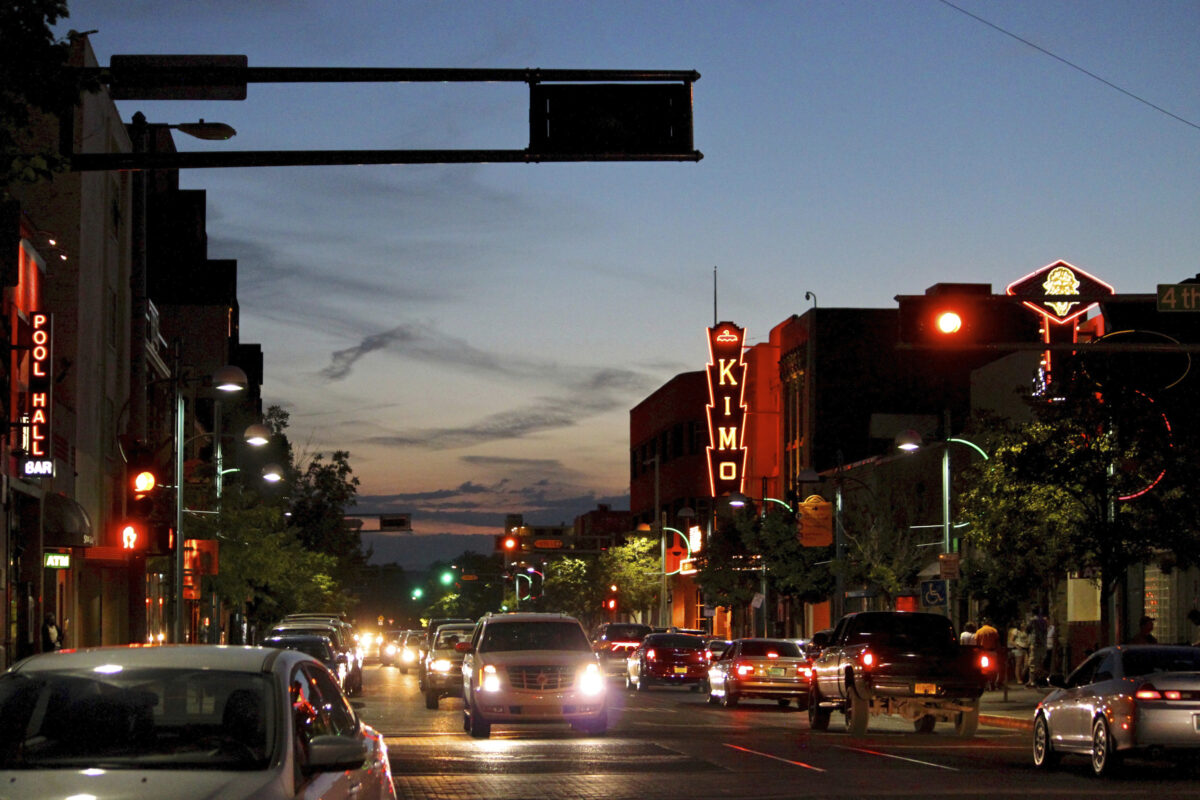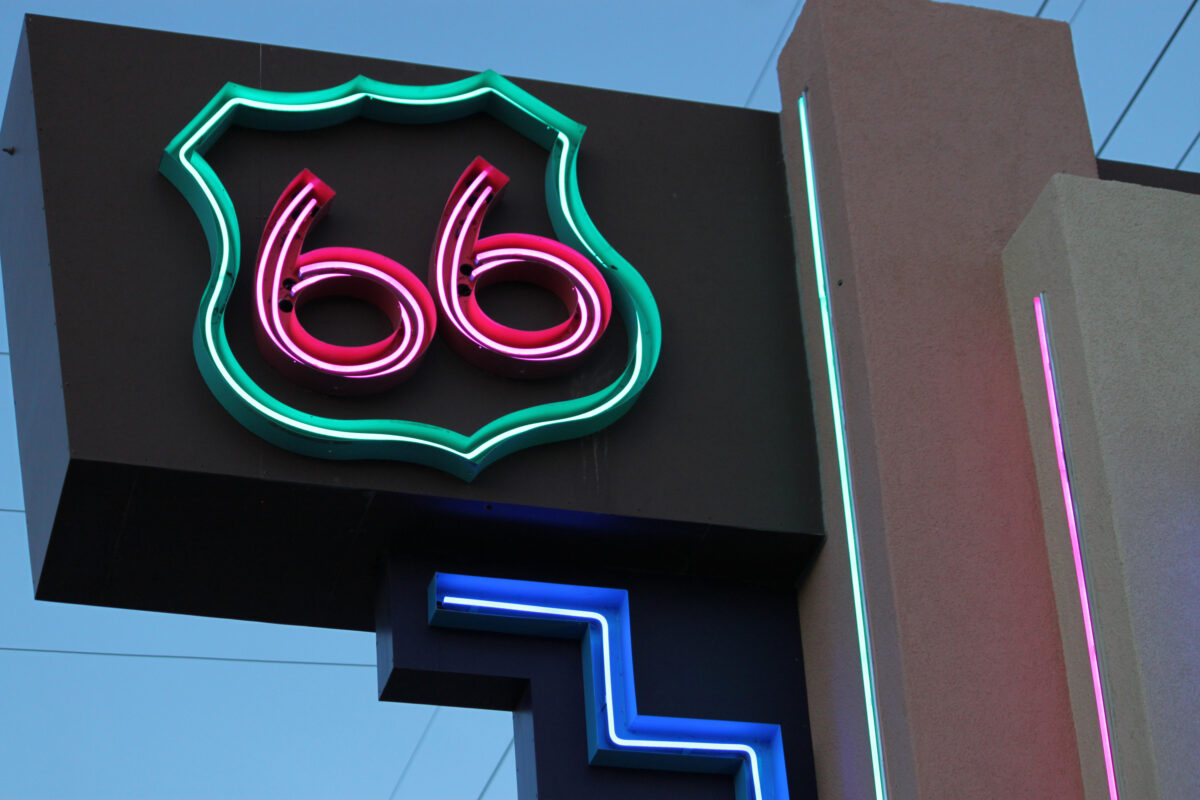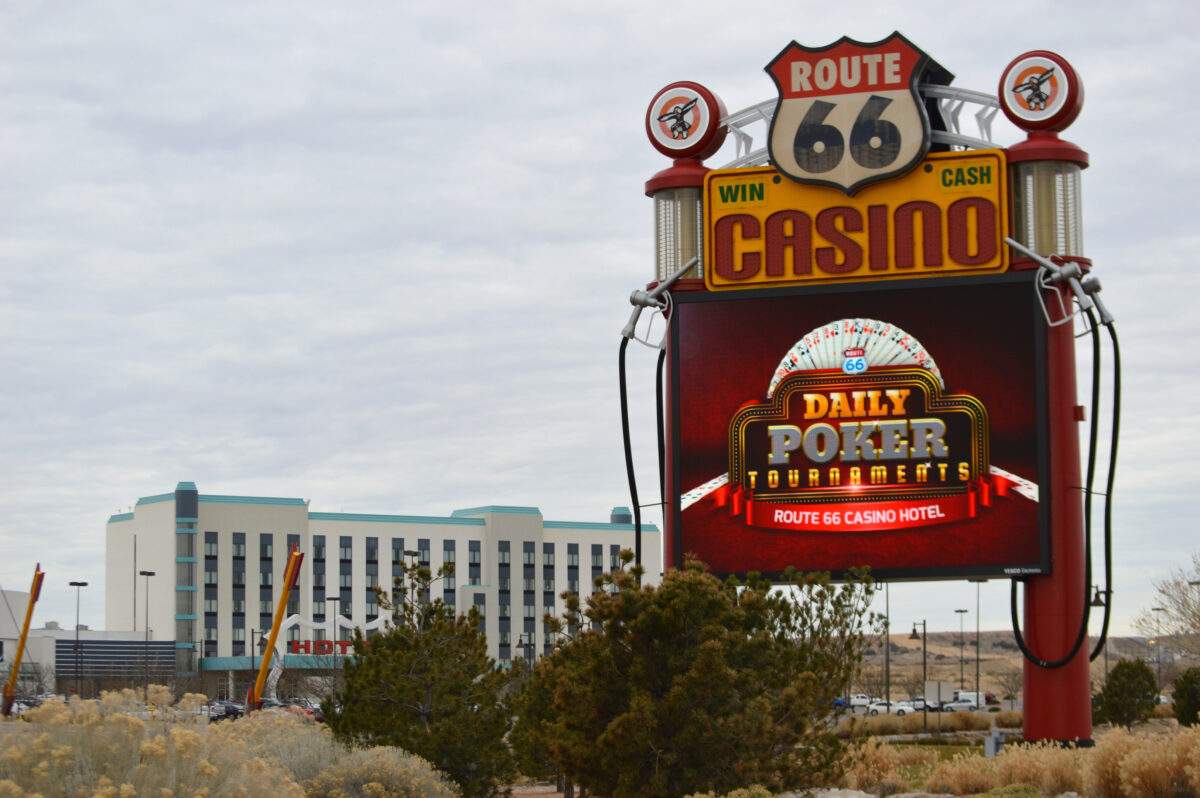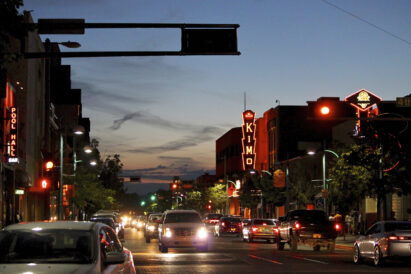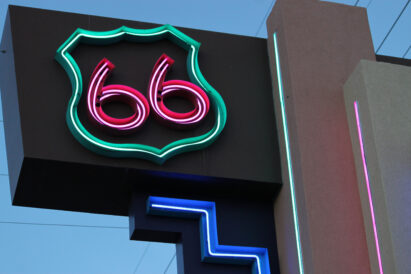Get Out There: Route 66: A supposedly American thing that mostly foreigners do
- FILE – In this June 21, 2016, file photo, cars make their way along historic Route 66 in downtown Albuquerque, N.M. (AP Photo/Susan Montoya Bryan, File)
- FILE–This June 21, 2016, file photo shows one of the neon signs that lines historic Route 66 in Albuquerque, N.M. (AP Photo/Susan Montoya Bryan, file)
- FILE – This Jan. 13, 2017, file photo, shows the Route 66 Casino outside of Albuquerque, N.M., along the historic Route 66. (AP Photo/Russell Contreras, File)
Cruising along Route 66 — the iconic ribbon of asphalt that runs from Chicago to Los Angeles — primes most Americans for a nostalgic, “National road trip.” But the reality? This beloved slice of Americana has become something of a pilgrimage for overseas tourists. In fact, international travelers on the “Mother Road” vastly outnumber domestic visitors today.
Indeed, over 72% of Route 66 visitors are from overseas, especially the UK, Germany, and Australia, according to the University of Illinois. Local shops confirm this annual trend, with one store reporting that international visitors outnumber Americans 5 to 1. Why is that? For many, Route 66 offers a taste of “real Americana” — one rooted in rural towns and quirky roadside attractions, far removed from urban landscapes.
Route 66 is also capturing the hearts of foreign photographers and culture enthusiasts. The ghost town of Amboy, California, for instance, still draws massive amounts of foreign visitors, despite a population of zero. This is because Amboy’s fade-from-glory aesthetic encapsulates a romanticized “lost America.”
Route 66 also fosters real cultural exchange. Many long stretches lie within Native American lands, from Oklahoma to New Mexico. Many organizations work to accurately tell those stories, balancing nostalgia with living cultures. Meanwhile, European-style Route 66 festivals in Germany, Japan, and Australia celebrate the legend — proof the road’s identity has truly become global.
Many Americans view Route 66 as tourist kitsch, however. It’s something fun to drive for an afternoon, rather than a long, multi-state road trip. Our innovative interstates in the 1950s made travel faster, after all, and Route 66 is slower, more winding, and less visible on modern GPS. But for international fans, that slower pace is the point — it’s American freedom in motion.
To this day, the legend thrives thanks to songs (“Get Your Kicks”), TV (“Route 66”), films (Pixar’s Cars), and real-life advocates like Angel Delgadillo, dubbed the “Guardian Angel” of the highway for his efforts to preserve the road’s legacy. These cultural touchpoints amplify the myth worldwide, turning Route 66 into an international bucket list item, not just a highway.
Here’s the twist: while foreign travelers flock to experience Route 66 as a cultural curiosity, Americans arguably belong on it. Few vacations offer such a concentrated dose of Americana — every mile packed with neon signs, tarot-card motels, diners, tribal art, and sepia-toned nostalgia.
Whether you’re from rural Oklahoma or suburban Ohio, Route 66 mirrors your own history–dusty roads your grandparents might’ve driven, gas stations they stopped at, road signs they recognized. It isn’t just kitsch — it’s family history.
Yes, Route 66 is evolving into a global phenomenon embraced predominantly by foreign tourists. But perhaps that’s just the jolt of perspective it needed. The Mother Road deserves more than postcard fame; it needs American explorers who value its lore and appeal for more than an afternoon drive.
So next time you’re itching for a getaway, consider Route 66. It’s cultural heritage, living memory, and a highway filled with human stories just waiting to be told. And yes, expect to hear accents from Great Britain, Germany, and Australia. But if enough drivers answer the call, Americans might just outnumber them again someday.
Blake Snow contributes to fancy publications and Fortune 500 companies as a bodacious writer-for-hire and seasoned travel journalist to all seven continents. He lives in Provo, Utah with his wife, five children, and one ferocious chihuahua.

